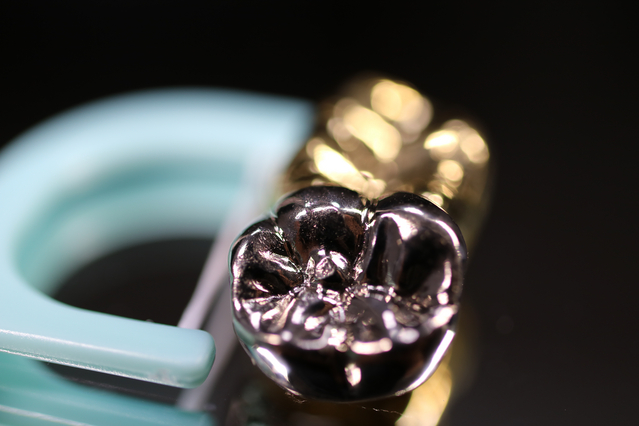1.1.1 Precious metal alloys
Precious metal alloys in dentistry, especially those based on gold, platinum and palladium, are characterized by their excellent corrosion resistance and biocompatibility. These alloys are traditionally valued for their long life and low wear, making them a preferred material for inlays, onlays , crowns and bridges.
Gold alloys are particularly popular due to their workability and aesthetic qualities. They are easy to polish and match the natural tooth shade, provide an excellent fit and minimize the risk of corrosion and plaque buildup.
Platinum and palladium alloys offer increased strength and hardness, making them ideal for thin restorations where maximum preservation of tooth structure is desired. Their use helps maintain the structural integrity of the restorative material while maintaining high aesthetics.
1.1.2 Non-precious metal alloys
Non-precious metal alloys, such as nickel-chromium and cobalt-chromium, offer a cost-effective alternative to precious metals. These alloys are known for their exceptional strength and hardness, making them ideal for structural applications in dentistry.
Nickel-chromiumalloys are widely used in the manufacture of denture bases and metallic frameworks, although they may cause allergic reactions in a minority of patients.
Cobalt-chromium alloys are characterized by excellent corrosion resistance and biocompatibility, making them a preferred choice for patients with nickel allergies.
1.1.3 Ceramic-metal alloys
The combination of metal and ceramic in porcelain-to-metal alloys (Porcelain fused - to-metal , PFM) enables a perfect balance between aesthetic appearance and mechanical strength. These alloys are particularly valuable for anterior tooth restorations, where aesthetics are of utmost importance.
1.1.4 New developments
The development of new alloys, including titanium and bioresorbable materials, reflects advances in materials science. Titanium alloys are preferred in implantology because of their exceptional strength and biocompatibility. Bioresorbable alloys offer new possibilities in regenerative medicine by providing temporary support functions and then dissolving safely in the body.
